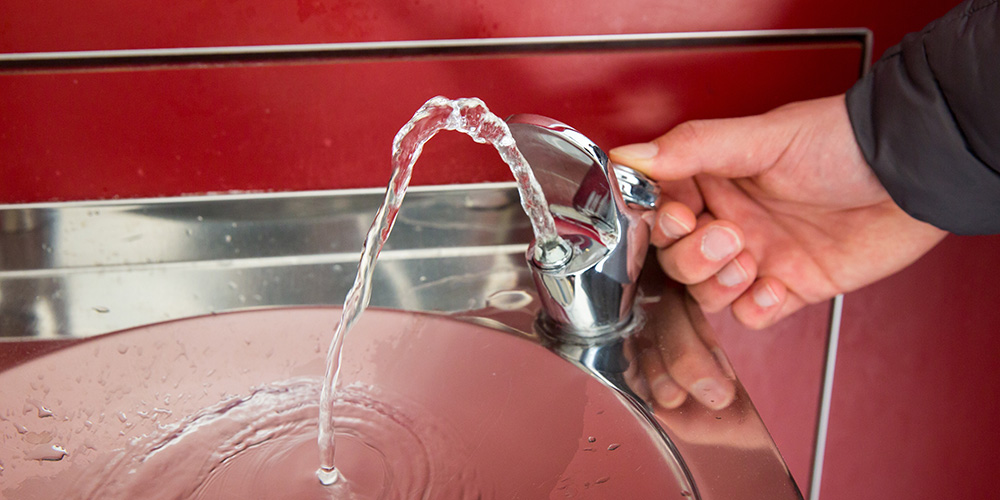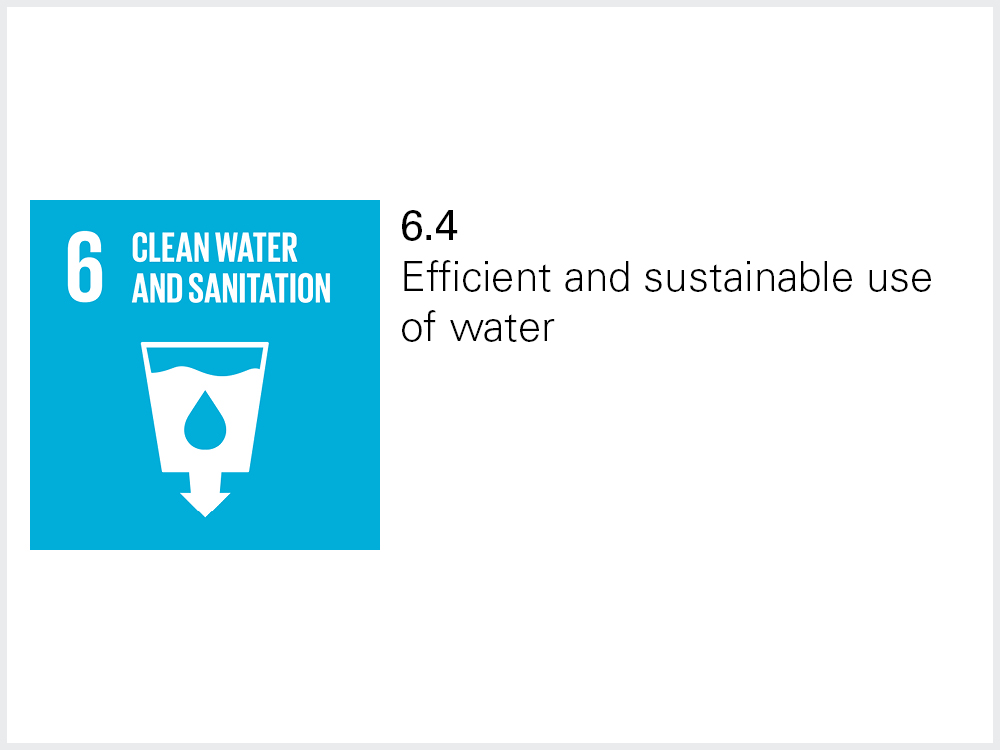Water

Water is used for many purposes in research, teaching and administration: as drinking water, for cleaning, in cafeterias, in steam production for sterilization, and as cooling water in laboratories. After an increase in 2019 of 6.4 % in comparison with previous years, water consumption in 2020 dropped by 20.2 % to 201,680 m³ due to the coronavirus pandemic among other reasons.
Water is an essential resource with limited availability. The University of Basel strives for sustainable use of water along the organization's entire value chain. For this purpose, water-saving measures are constantly tested on campus and data collection methods improved.

On the Schällemätteli and Rosental campuses, water is primarily used in research and the associated facilities. To reduce water consumption, we make sure to purchase instruments and equipment that require less water and try to optimize management of building services
Christopher Weiss, Campusmanager Schällemätteli, Rosental & Allschwil
Downward trend in drinking water consumption
In comparison with the average values for 2016-2018, water consumption in 2019 at the University of Basel rose by 6.4 % to 252,868 m3.1 This is roughly equivalent to the annual household water consumption of 4,500 Swiss private individuals.2 The increase is attributable to the rise in cooling water3 needed for biomedical research, which is responsible for more than 50% of water consumption.
Per capita (full-time equivalents, FTE4) water consumption in 2019 rose by 5.9 % in comparison with the average for 2016-2018, and by 4.7 %5 per usable floor area. That these changes are smaller than those in total consumption can be explained by an increase in full-time equivalents and usable floor area. A clear downward trend is apparent in drinking water consumption (total, per capita and per usable floor area), which has continuously decreased over the reporting years.
A special year
The coronavirus pandemic had a substantial impact on water consumption at the university. Compared with the average values for 2016-2018, water consumption dropped by 15.2 % to 201,680 m3 and consumption per usable floor area by 19.6 %. A comparison with 2019 shows an even stronger trend, with a reduction of 20.2 % and 23.2 % (per m2), respectively. The largest decrease is in cooling water, which dropped by 33.1 % per usable floor area.
Goals & actions
Improve data collection and monitoring of energy and water consumption
Implement a new energy management and monitoring system (EMMS) to improve controlling and optimize operations. First use at new Petersplatz central cooling system from mid-2021
Project management & engineering
Reduce water consumption at the University of Basel
Examine water-saving measures at the campus level
Facilities
Campus managers
Improve data collection and monitoring of energy and water consumption
Collect data for usable floor space to calculate energy and water consumption per m2 (of usable floor space)
Calculate total energy and water consumption, like-for-like (based on usable floor space)
Real estate development
Sustainability Office
Project management & engineering
[1] Associated buildings including the Swiss Tropical Institute and the university hospital were not taken into account.
[2] In 2019, daily household consumption of private individuals in Switzerland was 142 liters per day, or 52,000 liters (52 m3) per year.
[3] Cooling water consumption for 2016-2018 was estimated due to lack of data.
[4] Full Time Equivalents (FTE) include the number of employees (100% = 1 FTE) and the number of students. Students are counted as 0.68 FTE. A total of 11,716 FTE was used for 2019 and 12,012 FTE for 2020.
[5] A total of 154,971 m2 was used in 2019 and 160,933 m2 in 2020.



